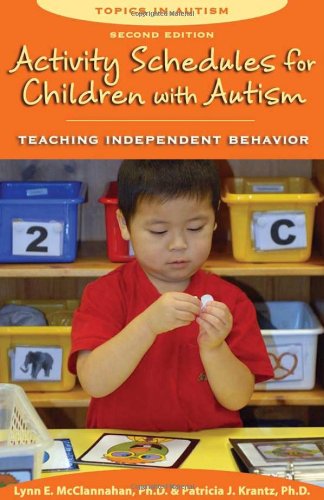This post contains affiliate links. As an Amazon Associate I earn from qualifying purchases
Like the bestselling first edition, this new edition of Activity Schedules will show thousands of parents and service providers how to use this teaching tool to help children and adults successfully engage in self-directed and purposeful activities.
Activity schedules are a set of pictures or words that cue a child to follow a sequence of steps. Based on ABA methods, learners are taught using a system of graduated guidance–physical prompts systematically faded as performance increases. Once the individual has mastered their use, he or she can independently follow a schedule to engage in activities at home, at school, and during leisure time. For example, activity schedules can cue an individual to prepare food with minimal assistance, interact with classmates, and complete a puzzle.
Based on over 20 years of research the authors have conducted at the Princeton Child Development Institute, the second edition discusses the latest research that points to positive outcomes from using activity schedules, including better self-management, decreased problem behaviors, and skill generalization, among other findings. The new edition includes:
-How to use activity schedules to organize all aspects of a person’s daily activities, and increase engagement, task completion, making appropriate choices, and sequencing activities;
-An expanded section on the use of activity schedules by adults, describing how they are used at home and in the workplace and via iPods and Blackberries;
-How to use activity schedules to promote social interaction and to teach children to point to and show objects to others in order to share a social experience.
Detailed instructions and examples help parents prepare their child’s first schedule, then progress to more varied and sophisticated schedules, leading to greater independence.
Also by the authors:
Teaching Conversation to Children with Autism
This post contains affiliate links. As an Amazon Associate I earn from qualifying purchases
